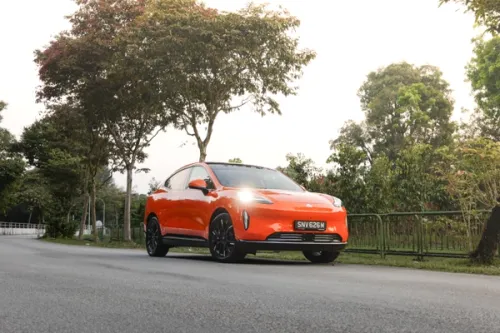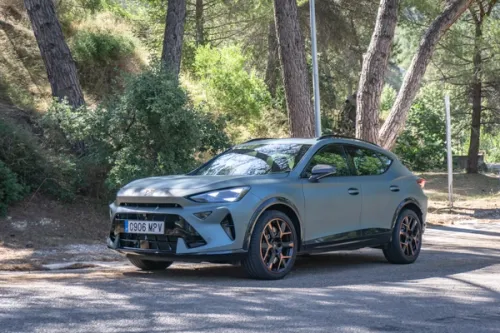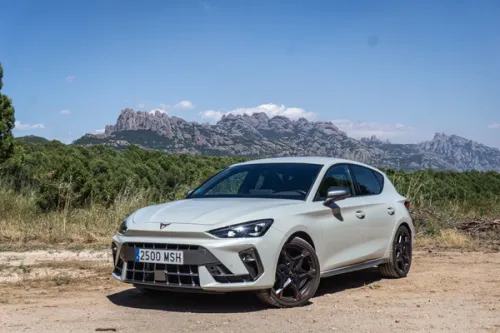The Legend of RS
From the RS 200 to today's Focus RS, there's just something special about these two letters on fast Fords.



2010 marks the 40th year since Ford's RS nameplate was first used. The first Blue Oval to wear the coveted RS badge was the Escort RS 1600. Since then, the acronym RS (Rallye Sport) has been an integral part of Ford's competition and sporting image.
Throughout the years, the moniker Rallye Sport was applied to no less than 20 models of both road and competition cars, the latter having one touring car races, world and national rallies as well as rally cross events. The RS badge was never applied to any model lightly, hence RS models would have to offer spectacular levels of performance, handling, safety and value-for-money.
RS-badged Fords have always shared a proud sporting tradition and have been built in many different forms. There have been front-engined or mid-engined types, front-wheel-drive, rear-wheel-drive or four-wheel-drive cars, with four-cylinder or six-cylinder normally aspirated or turbocharged engines.
Many have employed wind tunnel testing to evolve innovative aerodynamic features such as the tea tray spoilers fitted to Sierra and Escort RS Cosworths. All have pushed out the boundaries of technology and all have been successful in motorsport. The original RS-badged Ford - the Escort RS1600, was the first-ever Ford to use a 16-valve twin-overhead-camshaft engine and the first to be assembled in the new Advanced Vehicle Operation factory at Aveley in Essex in 1970. No one would have expected back then that the two alphabets RS will become so iconic.

Here are three of the most unforgettable RS models;
The RS200 was made for the Blue Oval to go rallying in the Group B category, the top rallying class in the early 1980s. In order for the RS200 to go rallying, Ford had to build a small number of road going versions for homologation. The 200 road cars built had 1.8-litre Cosworth engines with 250bhp but the rally cars had 2.1-litre motors with as much as 650bhp. In the end, Group B rally cars were banned as there were deemed to be too fast and unsafe before the RS200 had the chance to makes its mark. Ironically, one of the incidents that killed Group B off involved a RS200 which ploughed into a group of spectators at the 1986 Portuguese Rally, killing several. After the demise of Group B, the remaining RS200 rally cars competed in national rallies and rallycross.

1986 saw the introduction of the Sierra RS Cosworth. The original Cossie saw the first time the tea tray rear spoiler was ever used (it was latter more famously found on beng-ed-up EF Honda CRXs over here). Like the RS200, the Sierra Cossie was homologated to go rallying, this time in the FIA's Group A category. The 1993cc Cosworth engine with just over 200bhp sent its power to the rear wheels, making the Sierra spectacular to watch in the hands of drivers like Carlos Sainz and Didier Auriol among others on world championship rallies. A particularly highly sought after Sierra RS Coswoth variant was the RS500 (a name revived for the new Focus RS500). This homologation model was produced in limited numbers for racing in touring car championships worldwide. In 1988, the Sierra RS Cosworth morphed into the Sapphire RS Cosworth, basically a four-door saloon version that Ford wanted to go rallying with. Power was unchanged from the Sierra but I remembered a mate of mine had one in the late 1990s with a tweaked Cossie motor making more than 300 horses. With a turbo that is bigger than a six-month old baby, the lag was enormous. The uneven power delivery coupled with rear wheel drive made it a pretty scary car I remembered. Thankfully for he power hungry Cossie enthusiasts back then, Ford introduced a 4x4 version in 1992, with the rally version winning several events with Francois Delecour and Miki Biasion during the season.

E
The Escort Cossie will always be remembered as the ultimate RS by petrol heads of my generation. Who can forget that menacing front spoiler, bulging arches and that OTT rear wing? The Escort Cossie was based on the Sierra Coswrorh's platform and had the same engine but upgraded to make 227bhp. With the right amount of horsepower and all-wheel drive, the Cossie was not only the choice of petrol heads but also joyriders in the UK. At one time, it was the most stolen car in Blighty and the insurers hit the much loved Cossie hard as a result, slapping premiums as much as the value of the car during the peak. Top Gear's Jeremy Clarkson loved it so much that he bought one after testing a Cossie. The Escort Cossie died in 1996 just when WRC rules switched from Group A to World Rally Cars. World Rally Car versions of the Escort RS continued to compete in the WRC in 1997 and 1998 but no road cars were made.
The RS name was rested after 1994's Escort RS2000 until 2002 when the two letters finally reappeared on a rally blue mk 1 Focus. The RS is back and its spirit and ethos continue to live in today's second generation Focus RS.

:
Model Introduced in:
Escort RS1600 - 1970
Capri RS2600 - 1970
Escort RS2000 - 1973
Capri RS3100 - 1973
Escort RS1800 - 1975
Escort RS Mexico - 1976
Escort RS2000 Mk II - 1976
Escort RS1600i - 1981
Escort RS Turbo - 1984
RS200 = 1984
Sierra RS Cosworth - 1985
Sierra RS500 Cosworth - 1987
Sierra Sapphire RS Cosworth (saloon) - 1988
Sierra RS Cosworth 4x4 - 1990
Fiesta RS Turbo -1990
Escort RS2000 - 1991
Escort RS Cosworth - 1992
Fiesta RS1800 - 1992
Escort RS2000 4x4 - 1994
Focus RS - 2001
Focus RS mk 2 - 2009


Credits: Story by Raymond Lai Photos by Ford


Get the Best Price for your used car
from 500+ dealers in 24 hours

- Convenient and Hassle-Free
- Consumer Protection
Transparent Process
With No Obligation








